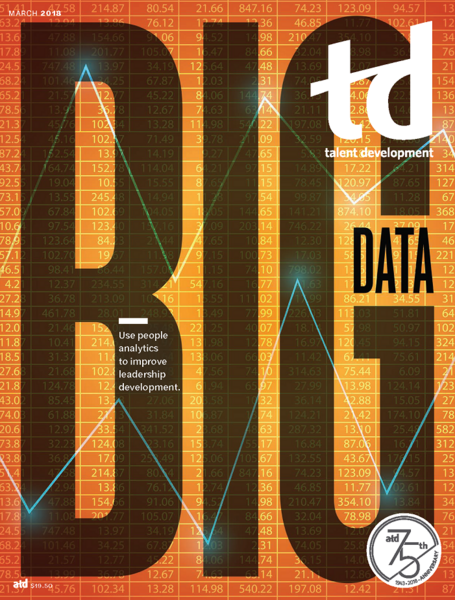TD Magazine Article
The Three Paths of Human Capital Management
A review of The Most Important Asset: Valuing Human Capital by Robert J. Greene
Thu Mar 01 2018
The Most Important Asset: Valuing Human Capital
By Robert J. Greene
Routledge, 320 pp., $60
Human capital graduates enter the field with a deep theoretical understanding of talent's value in a knowledge-based economy. But a challenge remains: How do we apply theories behind valuing human assets in diverse contexts? The Most Important Asset attempts to answer that question.
In his book, Greene offers important lessons about the world human capital practitioners encounter after graduation and illustrates the diverse opportunities that lie ahead—in tech start-ups, the public sector, consulting, nonprofits, and associations. Throughout the book he emphasizes that functional orientation leads practitioners to view human capital differently. "Whether one looks at the workforce as a cost, as an asset, as a tool to get things done or as a collection of people with different values, beliefs and needs will shape one's view of human capital," he writes.
To accentuate how values can shape approaches to human capital, Greene's book views talent management through three graduates of a master's program in human resources. He chronicles his subjects as they move through their careers, embark on their professional journeys, transition to new jobs, assume leadership roles, and form a consulting firm.
Together, the graduates' backgrounds, worldviews, and career choices illustrate different, equally valid reasons for valuing human capital. Take their responses to an economic crisis as an example. Greene uses his characters to create case studies that offer alternatives to staff reductions. The graduates advocate difficult decisions, such as strengthening performance management processes, making the current workforce more effective, and restructuring compensation and benefits packages. They face systemic barriers that deepen their understanding the axiom "what works is what fits the organizational context."
Greene's choice to frame his book through characters and their stories has three key benefits. First, the graduates' diverse backgrounds and approaches highlight the fact that there isn't a one-size-fits-all approach to human capital management. Second, the organizations where the characters work highlight the importance of culture to human capital management. Finally, the narrative approach, rich with character development and plot, captures and holds the reader's interest.
Overall, The Most Important Asset is a quality read around the wisdom of valuing human talent. I would recommend it for recent graduates, practitioners new to the field, and anyone who needs a reminder of why you entered the field in the first place.

